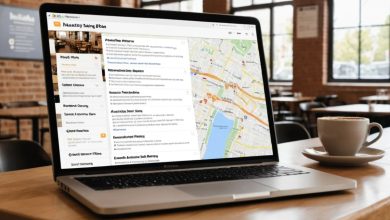Building a Networking Calendar: Never Miss Key Events
Creating a dedicated networking calendar transforms random event attendance into a strategic roadmap for career growth. By consolidating conferences, meetups, webinars, and follow-up tasks in a single view, you’ll consistently engage with industry opportunities and forge meaningful connections. In this article, you will learn why a networking calendar is essential, explore its core components, discover tools and strategies for building one, and master techniques to maintain and optimize it. Let’s dive in and ensure you never miss a key event again.
Understanding the Importance of a Networking Calendar
What Is a Networking Calendar?
A networking calendar is a structured schedule that tracks and reminds you of upcoming professional events—both in-person and virtual—while also capturing essential preparatory and follow-up tasks. Core characteristics include:
-
Consolidation of in-person conferences, local meetups, and online webinars in one view
-
Inclusion of prep tasks like researching attendee lists and creating personalized outreach messages
-
Automated reminders for registration deadlines, event start times, and post-event follow-ups
Why Every Professional Needs a Networking Calendar
Consistently building relationships requires more than occasional event attendance. A networking calendar helps you:
-
Ensure consistent relationship-building by avoiding ad-hoc outreach
-
Maximize visibility in industry circles by never overlooking key gatherings
-
Prevent calendar overload by helping you prioritize events with the highest return on time
-
Create long-term career-building milestones, such as securing early-bird conference registrations or scheduling quarterly alumni lunches
Identifying Your Networking Goals and Priorities
Before populating your calendar, clarify what you want to achieve:
-
Define target outcomes: Are you seeking job leads, partnership opportunities, mentorships, or skill-sharing sessions?
-
Determine event types: Identify whether conferences, local chapter meetups, specialized webinars, or alumni gatherings best serve those outcomes.
-
Set quantitative goals: For example, “Attend four major conferences and six smaller meetups this year.”
-
Align with your career timeline: Map events to hiring seasons, product launches, or industry cycles to ensure your networking aligns with professional milestones.
Core Components of an Effective Networking Calendar
Listing Key Event Types
Outline the types of events to include in your calendar:
-
Industry conferences and trade shows
-
Local and regional meetups, such as luncheons, happy hours, and roundtables
-
Webinars, panel discussions, and virtual roundtables
-
Alumni and professional association events
-
Internal company networking days and cross-department workshops
Categorizing Events by Relevance
Classification helps prioritize and balance your schedule:
-
Local vs. Virtual: Local meetups foster face-to-face rapport, while virtual events expand your geographic reach.
-
Industry-Specific vs. General-Interest: Niche gatherings provide deeper technical insights; general events broaden your network horizontally.
-
Frequency & Scale: Compare monthly “after-work” meetups to annual flagship conferences, and virtual “lunch-and-learn” sessions to week-long expos.
Determining Frequency and Time Allocation
Structure your calendar for sustained engagement:
-
Monthly Networking Quota: Commit to attending at least two small meetups and one webinar per month.
-
Quarterly Deep-Dive Events: Schedule one major industry conference each quarter.
-
Yearly Big-Ticket Events: Block time for flagship trade shows, leadership summits, or peak industry expos.
-
Time Blocking: Reserve preparation time—researching speakers, curating questions—and follow-up windows (30–60 minutes post-event) in your weekly schedule.
Tools and Strategies for Building Your Networking Calendar
Digital Calendar Platforms: Pros & Cons
Choose a platform that aligns with your workflow:
| Platform | Pros | Cons | Ideal Use Case |
|---|---|---|---|
| Google Calendar | Cross-device sync, easy sharing, free | Lacks specialized networking templates | Solo professionals needing simplicity |
| Outlook Calendar | Enterprise integration, robust reminder options | Can be complex for non-enterprise use | Corporate teams coordinating schedules |
| Apple Calendar | Native to macOS/iOS, Siri integration | Limited cross-platform functionality | Apple-centric executives |
Dedicated Networking Calendar Apps & Trackers
Look for tools specifically tailored for networking:
-
Preloaded event databases with industry filters
-
Automated reminders for registration deadlines and follow-up tasks
-
Contact-logging features that track outcomes, like who you met and key discussion points
-
Integration with LinkedIn or CRM systems to import events directly
Weigh each app’s free vs. premium features, and consider how it syncs with your existing workflow.
Template Creation: Designing a Simple Spreadsheet or Calendar
If you prefer a manual approach, build a customizable template:
-
Create columns for Date, Event Name, Location/Link, Category (Conference/Webinar/Meetup), Registration Deadline, Prep Tasks, Follow-Up Task, and Notes.
-
Apply conditional formatting to highlight upcoming events: yellow for those within two weeks, red for overdue follow-ups.
-
Use data validation to create dropdown menus for “Category” and “Priority,” enabling quick sorting and filtering.
This spreadsheet can serve as a centralized dashboard until you transition to a dedicated app.
Researching and Identifying Key Networking Events
Sources for Finding Events
Discover relevant gatherings through trusted channels:
-
Professional associations and trade bodies: Scan “Events” or “Calendar” pages for upcoming conferences
-
Industry groups and niche communities: Subscribe to newsletters that curate both local and virtual meetups
-
Alumni networks: Check university career center announcements for job fairs, mixers, and speaker series
Using Online Event Platforms with Filters
Streamline discovery by leveraging event platforms:
-
Filter by location (e.g., city-based searches for in-person events)
-
Use industry keywords like “marketing summit,” “tech workshop,” or “legal networking” to narrow results
-
Adjust date ranges to focus on events happening within the next 30 days
Tutorial: Setting Up Automated Event Alerts
-
Choose keywords that match your interests, such as “networking,” “industry meetup,” or “career fair.”
-
Create email notifications to receive weekly summaries of new events matching those criteria.
-
Export relevant events in iCal or CSV format to auto-populate your calendar.
Leveraging Social Media and Community Forums
Tap into the networks that professionals already use:
-
Join LinkedIn groups, Facebook communities, and Slack channels where peers share event announcements
-
Post inquiries: “Looking for upcoming marketing meetups in New York—any recommendations?”
-
Create social media alerts: Save custom hashtag searches (e.g., #TechNetworking, #MarketingMingle) to monitor newly shared events
-
Bookmark event threads using your browser or a notes app to keep track of promising leads
Scheduling and Time Management Techniques
Prioritization Framework: Assessing ROI
Evaluate each event’s potential impact before committing:
-
Relevance: Rate how closely the event aligns with your professional goals.
-
Reach: Assess potential audience size and diversity—local gatherings might be smaller but more intimate, while regional conferences offer broader networking.
-
Cost vs. Benefit: Compare ticket prices and travel expenses against expected lead generation or learning opportunities.
Tutorial: Creating a 2×2 “Value vs. Effort” Grid
-
List upcoming events in the left column.
-
Assign a score (1–5) for Value and Effort to each event.
-
Plot events on a grid: prioritize those with high value and low effort to maximize ROI.
Time Blocking for Preparation and Follow-Up
Effective networking demands dedicated preparation and follow-through:
-
Prep Time: Schedule 30–60 minutes before each event to research attendee lists, review speaker biographies, and update your elevator pitch.
-
Event Time: Block the event slot, plus 15-minute buffers for technical checks (for virtual events) or travel (for in-person gatherings).
-
Follow-Up Window: Reserve 30–45 minutes within 24–48 hours post-event to send personalized messages and schedule next-step conversations.
Balancing Virtual and In-Person Events
Diversification prevents burnout and broadens reach:
-
Virtual Benefits: Zero travel costs, flexibility, and the ability to attend global events.
-
In-Person Benefits: Richer engagement, spontaneous side conversations, and stronger rapport.
-
Monthly Allocation: Aim for at least one in-person event and two virtual events per month.
-
Avoid Overcommitment: Limit total monthly events to four, leaving buffer weeks for catch-up and rest.
Avoiding Event Fatigue
Recognize when too much networking becomes counterproductive:
-
Signs of Overload: Mental exhaustion, declining engagement, and frequent last-minute cancellations
-
Strategies to Manage Overload:
-
Rotate event types between low-pressure online meetups and large conferences
-
Delegate attendance when part of a team—divide and conquer industry sectors
-
Schedule quarterly “no-event” weeks to recover and plan
-
Best Practices for Maintaining and Updating Your Networking Calendar
Regular Calendar Reviews
Consistency ensures you stay on track:
-
Weekly Check-Ins: Review events within the next two weeks, confirm registrations, and update any last-minute changes. Schedule follow-up tasks for events that just happened.
-
Monthly Audits: Assess each event’s performance—note how many contacts you made, follow-up success, and quality of leads. Remove outdated or canceled entries to keep the calendar lean. Add new opportunities uncovered through research channels.
Integrating Reminders and Notifications
Never let an event slip through the cracks:
-
Desktop & Mobile Alerts: Use two-tier reminders—seven days before to finalize prep, and two hours before for final logistics.
-
Email Summaries: Configure a weekly digest summarizing all upcoming events in your calendar.
-
Snooze Features: If your schedule becomes overwhelming, snooze noncritical reminders for a few days to maintain focus.
Syncing Across Devices and Teams
Leverage technology to ensure accessibility and collaboration:
-
Mobile Sync: Enable calendar syncing on your smartphone and tablet to receive notifications on the go.
-
Team Sharing: Create a shared “Networking” calendar where team members can view, add, and edit events.
-
Permissions: Set “Can Edit” permissions for collaborators and “Can View” for stakeholders who need visibility.
Tutorial: Setting Up Shared Calendars
-
Create a dedicated “Networking” calendar in Google or Outlook.
-
Invite team members to share with appropriate permissions.
-
Use distinct colors for categories—blue for conferences, green for webinars—to facilitate quick scanning.
Using Color-Coding and Labels to Organize Events
Visual cues help you prioritize at a glance:
-
Color Assignments:
-
Red for high-priority or flagship conferences
-
Orange for local meetups and happy hours
-
Blue for virtual webinars and panel discussions
-
Green for internal company or association events
-
-
Labels or Tags: Use “Follow-Up Needed,” “Research Complete,” or “RSVP Pending” to track each event’s status.
Tutorial: Implementing Color-Coding in Google Calendar
-
Create event categories by selecting “Event Color” when adding or editing.
-
Set default colors for recurring event types to automate categorization.
-
Use event descriptions to include labels like “[RSVP Pending],” updating them as status changes.
Post-Event Actions and Follow-Up Scheduling
Setting Follow-Up Reminders
Immediate follow-up cements new relationships:
-
Within 24 Hours: Send personalized thank-you emails referencing key conversation points.
-
Within One Week: Schedule brief calls or coffee meetings with top-priority contacts.
-
Automated Task Creation: Use a CRM or spreadsheet with columns—Contact Name, Date Met, Follow-Up Date, Notes, Next Step—and set recurring reminders.
Logging Outcomes and Performance Metrics
Measure the impact of your networking efforts:
-
Key Performance Indicators (KPIs):
-
Number of new contacts added per event
-
Follow-up response rate within one week
-
Number of meetings scheduled from follow-ups
-
Opportunities generated (job leads, partnerships, sales prospects)
-
-
Building a Networking Dashboard:
-
Set up columns: Event Name, Date, Contacts Made, Follow-Up Replies, Meetings Scheduled, Opportunities Generated
-
Calculate conversion rates: (Meetings ÷ Contacts) × 100 and (Opportunities ÷ Contacts) × 100
-
Review quarterly to identify high-ROI event types and refine your strategy accordingly
-
Adjusting Future Calendar Entries Based on Learnings
Use data-driven insights to optimize:
-
Increase attendance at event types with higher conversion rates
-
Allocate more preparation time to events where follow-up success was lower than expected
-
Experiment with new formats—such as virtual roundtables if large conferences yield diminishing returns
Comparing Manual vs. Automated Networking Calendars
Pros and Cons Comparison
| Method | Pros | Cons | Ideal User |
|---|---|---|---|
| Manual Spreadsheet/Calendar | Full control, tailored customization | Time-consuming updates, prone to human error | Professionals preferring hands-on management |
| Automated Calendar Tools | Auto-populates from chosen sources, reduces manual entry | Subscription costs, potential over-reliance on defaults | Busy professionals and larger teams needing efficiency |
Featured Snippet: Quick Steps to Set Up an Automated Networking Calendar
-
Choose a calendar platform or app that integrates with event sources like LinkedIn, Meetup, and industry newsletters.
-
Configure event feeds with search keywords such as “networking,” “conference,” and your niche (e.g., “healthcare summit”).
-
Enable two-tier reminders: one week and two hours before each event.
-
Automate follow-up tasks by creating rules that generate reminders 24 hours after each event concludes.
-
Sync the calendar across devices and share with team members, ensuring everyone sees the same schedule.
Frequently Asked Questions (FAQs)
How Often Should I Update My Networking Calendar?
Perform a weekly review of upcoming events to confirm registrations and adjust for any changes. Conduct a monthly audit to evaluate past outcomes—track new connections, follow-up success, and ROI—and refine future entries accordingly.
What Should I Include Besides Event Dates?
In addition to date and time, record:
-
Registration deadlines and early-bird pricing cutoffs
-
Preparation tasks, such as researching speakers or updating your pitch
-
Follow-up activities, like drafting personalized emails or scheduling post-event meetings
-
Outcome notes capturing who you met, conversation highlights, and agreed-upon next steps
Can I Use One Calendar for Personal and Professional Events?
Yes. Use color-coding or separate calendars to distinguish personal from professional commitments. For example, designate the primary calendar for work and a secondary shared calendar for networking. This approach keeps your network-building efforts visible without cluttering your personal schedule.
Are There Free Templates or Tools to Get Started?
Numerous free spreadsheet templates exist—build a simple Google Sheets layout with columns for Date, Event, Category, Prep Tasks, and Follow-Up. For automated solutions, use calendar apps that support importing events from email or RSS feeds, many of which offer free tiers.
Conclusion
A well-structured networking calendar is the cornerstone of consistent, strategic relationship-building. By understanding its importance, listing key event types, and categorizing them by relevance, you create a foundation for sustained engagement. Leveraging digital calendar platforms or dedicated tracking tools ensures you never miss a critical meetup, webinar, or conference registration deadline. Researching events through professional associations, online platforms, and social media keeps your calendar populated with high-value opportunities. Time-blocking for preparation, balancing virtual and in-person gatherings, and avoiding event fatigue preserve your energy and productivity. Regular reviews, integrated reminders, and color-coded organization maintain the calendar’s effectiveness, while diligent post-event follow-up and performance tracking turn each connection into a tangible career benefit. Implement these strategies to build a networking calendar that fuels long-term professional growth and ensures you seize every opportunity on your path to success.
Published on: 4 de June de 2025








